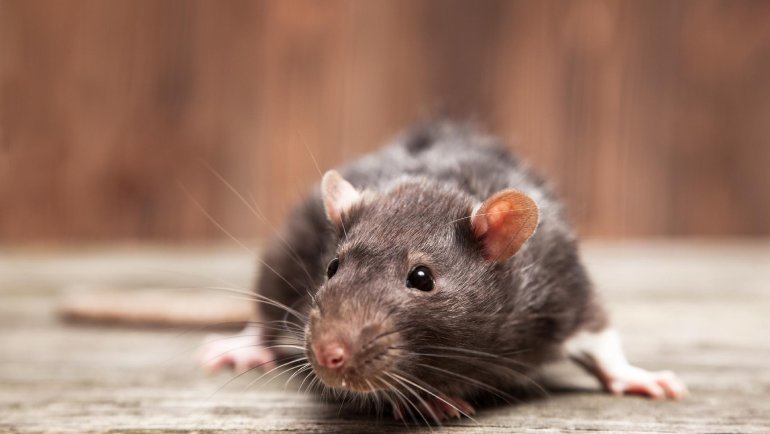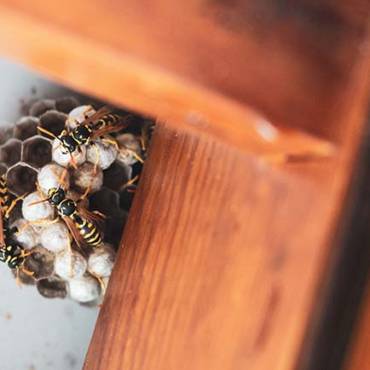Rodent Proofing Your Home: Expert Tips to Keep Rats and Mice at Bay
Rodent infestations can be a nightmare for homeowners, resulting in both structural damage and serious health concerns. Rats and mice not only cause damage to your property by gnawing on materials and wires, but they also pose a significant risk to human health due to the potential spread of diseases. Bee Smart Pest Control is committed to providing homeowners with educational and informative resources to help maintain a healthy, rodent-free living environment. In this article, we will explore effective rodent-proofing tips and techniques to protect your home from unwanted rat and mouse invasions.
As adaptable and persistent creatures, rodents have a unique ability to infiltrate homes in search of food, water, and shelter. Successfully keeping rats and mice at bay calls for a comprehensive understanding of their habits and proactive measures to deter them from entering your living space. This guide will dive into rodent behavior, common entry points, and practical steps you can take to ensure that your home remains off-limits to these unwelcome pests.
Let Bee Smart Pest Control’s expert insights guide you in creating a rodent-proof living space free from the threat of rats and mice. Implement these tips and techniques to enjoy the peace of mind that comes with a secure, well-protected home, safe from unwanted rodents that could potentially jeopardize your family’s health and well-being.
1. Identifying Common Rodent Entry Points
Rodents have a remarkable ability to squeeze through incredibly small openings, making it essential to be aware of common entry points that may grant them access to your home.
Cracks and gaps in foundations and walls:
Rodents can exploit even the smallest holes in your home’s exterior, so inspecting and sealing any visible gaps regularly is crucial.
Utility entry points:
Mice and rats may use openings around pipes, vents, and wiring to infiltrate your home, so seal these access points with appropriate materials.
Doors and windows:
Unsealed gaps around doors and windows can provide easy access for rodents. Use weather stripping and door sweeps to block their entry.
Roof and attic:
Check your roof for any damage that could allow rodents to enter through eaves, vents, or damaged shingles.
2. Understanding Rodent Preferences and Behaviors
Gaining insight into rodent behavior and preferences is paramount in adopting practical strategies to reduce their presence in your living spaces.
Nesting Habits:
Rodents typically seek shelter in dark, secluded areas, such as basements, attics, and wall cavities. They may also construct nests behind appliances or within cluttered storage spaces.
Food and Water Sources:
Rats and mice are attracted to areas with readily available food and water supplies, such as pantries, kitchens, and leaky pipes.
Activity Patterns:
Rodents are primarily nocturnal, making them more likely to hear scratching, scurrying, or gnawing sounds at night.
3. Implementing Effective Rodent-Proofing Techniques
You can take several steps to secure your home against rodent invasions. Adopting a proactive approach can help prevent infestations before they become a significant issue.
Seal Access Points:
Inspect your home thoroughly for potential entry points and use caulk, steel wool, or other appropriate materials to seal any openings.
Regular Cleaning:
Maintain a clean and clutter-free home by vacuuming and wiping surfaces regularly, thus eliminating potential nesting sites and deterring rodents.
Proper Food Storage:
Store all food items securely in airtight containers and promptly clean up spills and crumbs to avoid attracting rodents.
Manage Waste:
Ensure that indoor and outdoor waste receptacles have tight-fitting lids and are regularly emptied to minimize the availability of food sources for rats and mice.
Inspect and Repair Home Exterior:
Regularly inspect your home’s exterior for any signs of damage, focusing on the roof, eaves, and utility entry points, and make prompt repairs as necessary.
4. Strategies for Ongoing Rodent Control
Establishing an ongoing rodent control strategy is essential in maintaining a consistently rodent-free environment.
Trapping and Monitoring:
Use a combination of live traps, snap traps, and glue boards to capture any rodents that may have entered your home. Regularly inspect traps and relocate them as needed to ensure a strategic placement.
Landscape Maintenance:
Trim overhanging tree branches and keep vegetation well-trimmed around your home’s perimeter to minimize hiding spots and potential entry points.
Regular Inspections:
Routinely inspect your home for any new entry points, rodent droppings, or other evidence of rodent activity. Address identified issues promptly to mitigate the risk of infestations.
Consult Professionals:
If you suspect a serious rodent issue or are unsure of the best approach, consider consulting a professional pest control service like Bee Smart Pest Control for expert guidance and solutions.
Conclusion
Protecting your home against rats and mice is challenging but crucial for maintaining a healthy and safe living environment. By understanding rodent behavior and preferences, identifying potential entry points, and implementing effective rodent pest control, you can successfully guard your home against these unwelcome invaders. Trust Bee Smart Pest Control’s expertise in assisting you with creating a secure, rodent-free living space that provides comfort and peace of mind for you and your family.
FAQs about Rodents and How to Keep Rats and Mice at Bay
How do rats and mice enter homes?
Rats and mice can enter homes through tiny cracks and gaps in foundations and walls, openings around pipes and vents, unsealed doors and windows, and damaged roof shingles. Regularly inspect and seal these potential entry points to keep rodents out.
What attracts rodents to my home?
Rodents are attracted to homes that provide easy access to food, water, and shelter. Unsecured food items, cluttered storage areas, and moist environments like leaky pipes can make your home more appealing to rats and mice.
Are rodents more active during a certain time of day?
Yes, rodents are primarily nocturnal and are more active at night. This is when they search for food and water, so you might hear scratching, scurrying, or gnawing sounds after dark.
What are some effective rodent-proofing techniques?
To rodent-proof your home, seal access points with materials like caulk or steel wool, keep your home clean and clutter-free, store food in airtight containers, manage waste properly, and repair any exterior damage promptly.
How can I detect a rodent infestation in my home?
Signs of a rodent infestation include droppings, gnaw marks on furniture or wires, nesting materials like shredded paper, and unusual pet behavior. If you notice these signs, inspect your home for rodents and consider professional pest control services.
Can landscaping affect rodent infestations?
Yes, overgrown vegetation and tree branches touching your home can provide shelter and entry points for rodents. Maintain your landscape by trimming bushes and trees to minimize these risks.
What should I do if I find rodents in my home?
If you find rodents in your home, set up traps like snap traps or live traps to catch them. Monitor and relocate traps regularly for effectiveness. For severe infestations, it’s best to contact a professional pest control service like Bee Smart Pest Control.
Is it necessary to consult professionals for rodent control?
While some infestations can be managed with DIY methods, consulting professionals is advisable for serious or persistent rodent issues. Expert pest control services can provide a comprehensive assessment and tailored solutions to effectively eliminate rodents from your home.
For more information on keeping your home rodent-free or to schedule a consultation, visit Bee Smart Pest Control’s website or contact us directly. Let us help you maintain a healthy, rodent-free living environment.




